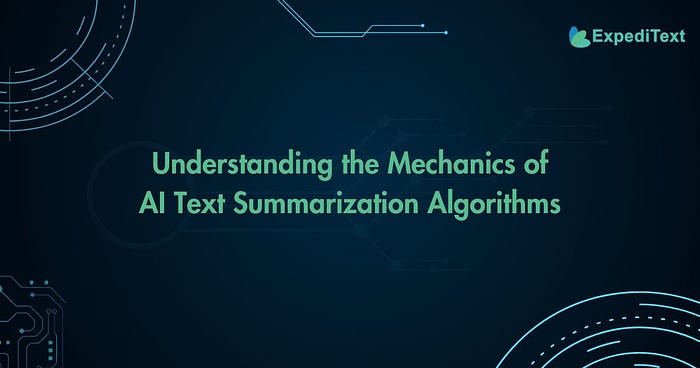Understanding the Mechanics of AI Text Summarization Algorithms

Today, AI is one the of most leading and fascinating areas. One of the most practical things, which AI can now do, is to summarize text. This function is like a bridge that leads you through the long trail you can take from the vast sea of information that is available online, and the short time you can spend consuming it. For those who like AI study, and now even more than before in the world overwhelmed by tons of information, it is a very exciting practice. In this blog we will shed away the dark veils before the mechanisms of AI text summarization making machine learning kid friendly not only for the AI professionals but also for every person interested in learning about the basics of AI.
What is AI Text Summarization?
Mainly an AI Text Summarizer representing a set of different- different tools that allow to reduce the narrative approved texts to shorter, but coherent, and more relevant summaries without losing the main text thread or context. Such an approach utilizes intricate techniques which involve the sorting of the content by means of algorithms, determining the key points, and representing them in an easy-to-understand manner. This is like when you have that very wise friend who every single day does all the research you are curious about and makes huge reports and then provides you with a summary with just a few sentences.
How Does it Work?
The superpower of AI Text Summarizer lies in its capability to process and understand the natural language, the technical domain of Natural Language Processing (NLP).
There are primarily two approaches to text summarization in AI:
- Extractive Summarization: Visualize a scenery where you are travelling through a newspaper or an article and pinpoint the sentences that really emphasis the text and makes more sense. Paraphrasing summarization is done similarly by choosing the important text words, phrases, or sentences and then putting them together in a sequence to form a summary. Through the use of algorithms that count and prioritize the text according to its individual characteristics such as repetitiveness and meaning, this method can automatically find the most appropriate segments.
- Abstractive Summarization: Contrary to how a literal summary chooses words from an original text, abstractive uses a method of generating individual fresh sentences to depict the main idea naturally and coherently. It is the type of text transformation that devotes more attention to the knowledge restructuring and reformulation by employing context, semantic representation, inference, among other advanced NLP methods that is necessary for language generation. Such a technique is more complex, but it nicely provides us with summaries that are more pleasant and sound like actual speech.
The Challenges
Developing an effective AI Text Summarizer is not an easy task. The process involves tackling several challenges, such as:
- Understanding Context: Contextual setting goes a long way towards precise recapitulation. While the algorithm should be able grasp not only the words but also the meaning implied by the concepts and the relationships between those concepts within the context.
- Sarcasm and Idioms: This can be quite hard for AI to grasp if the laws are complex and numerous in number.
- Brevity vs. Completeness: Involving the balance of not making the summary too short and not losing the critical information is a fine kind of art.
- Bias: The summary design should aim to wipe off any perception of the subtext, rather than reflect or amplify those biases in the original text and be subject of continuous review.
Applications and Benefits
The applications of AI Text Summarizers are numerous and differ from one situation to the other. They are engaged by news aggregation platforms to give users short articles extracts, are used to summarize complex academic documents, for customer service to minify customer feedback, and much more. The rewards are no less enticing, providing multiple reasons such as time gains, better learning, and improved availability of information.
Looking Ahead
With each technological improvement, AI text summarizer algorithms will be better exploited to not only understand the literal meaning of texts but also will show the ability to detect subtleties, tone and context. Machine learning, especially deep learning advances, offer such a path for transforming the summaries, which now are more adequate and of high quality.
Conclusion
AI Text Summarization is a well-known example of the power and the scope of artificial intelligence (AI). The process of making algorithms simpler by presenting them as individual components will make it possible for you to have a better understanding about the tools and how valuable they can be. With AI development progressing forward, the ability for these summarizers to comprehend and assess data will only grow, therefore revealing the data in a more manageable and potentially useful fashion. It gives a clear idea about the working mechanism of AI text summarizer. It is a basic understanding of what AI is to clarify AI concepts to use them for professional development, academic research, or personal curiosity.
